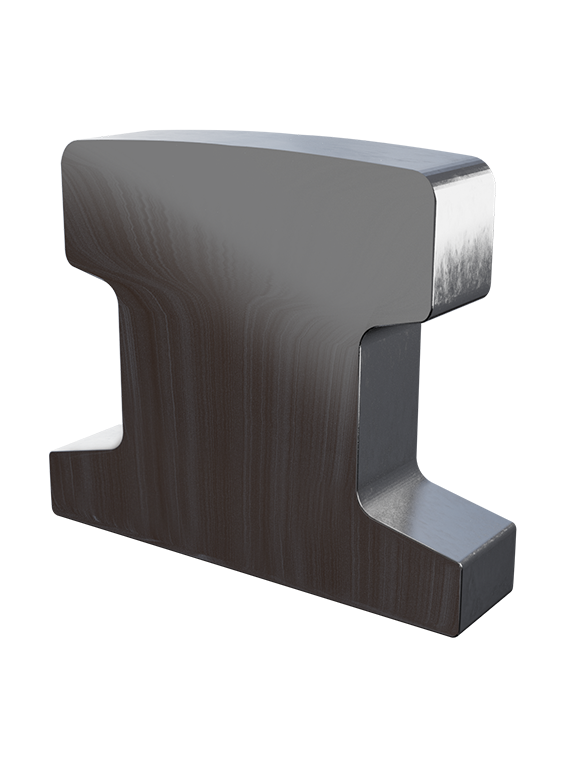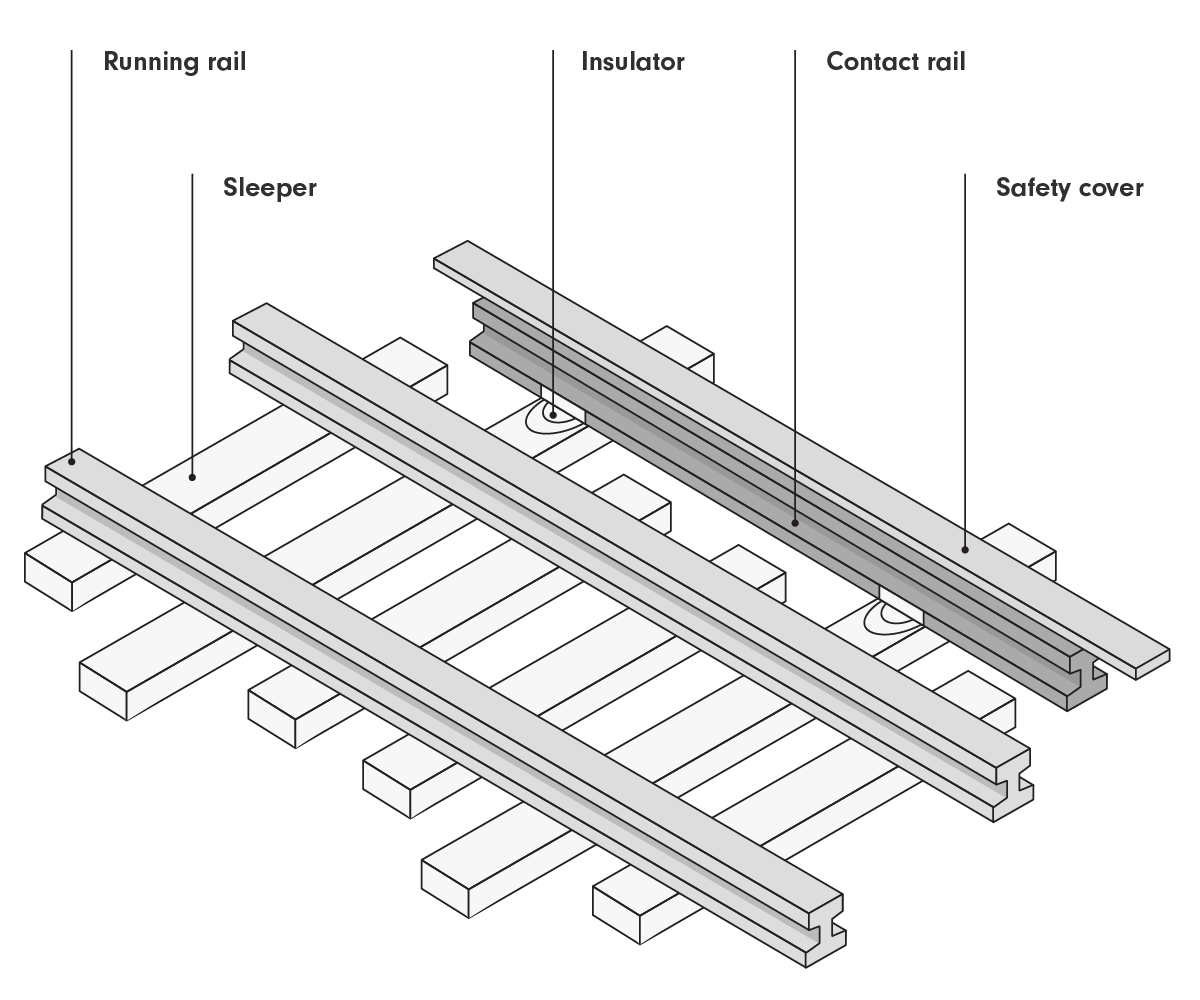
Contact Rails
Contact rail is also referred to as ‘third rail’ and is used to transfer electricity to the train or tram. In addition it can also serve as a guide bar to limit the lateral movement of the railcars.
Contact rails are made of low carbon steel and produced according to each transit authority’s specifications. Low carbon steel is used in this application because it has about one third of the electrical resistance relative to the hard steel used for running rail.
Basic Dimensions
| Profiles | Weight | Head width | Height | Base width | Web | ||||||||||
|---|---|---|---|---|---|---|---|---|---|---|---|---|---|---|---|
| kg/m | lb/yd | mm | in | mm | in | mm | in | mm | in | ||||||
| 150NMC (STR74, TR75) | 74.00 | 149.18 | 104.80 | 4 1/8 | 103.19 | 4 1/16 | 123.83 | 4 7/8 | 69.85 | 2 3/4 | |||||
| STR40 | 40.27 | 81.18 | 80.00 | 3.15 | 105.00 | 4.13 | 80.00 | 3.15 | 18.00 | 0.71 | |||||
| T52 | 52.31 | 105.45 | 101.00 | 3.98 | 100.50 | 3.96 | 45.00 | 1.77 | 45.00 | 1.77 | |||||
| Guide Bar | 44.35 | 89.41 | 100.00 | 3.94 | 150.00 | 5.91 | 25.00 | 0.98 | n/a | n/a | |||||
Technical Parameters
The main technical parameters of the 150NMC rail used by subways in the Americas are as follow:
| Profiles | Electrical resistivity (at 20° C) | Hardness (HB) |
|---|---|---|
| 150NMC (STR74, TR75) | < 11.90 μΩ -cm | ≥ 70 |
Example of Installation

